Are you searching for a complete upper-body training workout that will work on your pecs, triceps, shoulders, traps, lats, and rhomboids? Well, look no further than a dumbbell press exercise.
A dumbbell press is a haven for bodybuilders who wish to burn fat and build muscles. As it helps them target more than one muscle per workout, they use it to their advantage to increase their range of motions.
| Utility | Basic |
| Mechanics | Compound |
| Force | Push |
Muscles Worked by Dumbbell Press
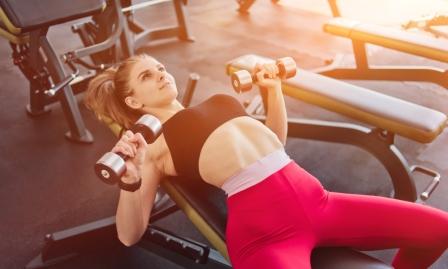
As mentioned earlier, the dumbbell press focuses on the upper body. It targets several muscle groups, like:
- Chest (pectorals)
- Arms (triceps)
- Shoulders (deltoids; anterior, medial, and posterior shoulder)
- Upper back (trapezius)
- Glutes
When you have the correct form, grip, and variations, you can target all the essential muscle groups.
According to a study by NCBI, a 6-RM bench press on an inclined bench can target and activate lower triceps brachii. The higher triceps brachii can be activated with a flat or declined bench position. Hence, you can go beyond your limits by trying out different forms and positions.
Benefits of Dumbbell Press
Do you wish to see a significant change in your performance, be it athletic or at the gym? If yes, you must inculcate dumbbell press in your daily workout routine. Barring that, the following are some of the advantages of the dumbbell press:
Muscle Activation

As mentioned before, the dumbbell press activates several muscles like hamstrings, quads, core, deltoids, triceps, forearms, glutes, etc. When such a significant amount of muscles get activated with the same workout, you tend to lean towards it.
Bodybuilders are always in favour of building hypertrophy. Basically, hypertrophy is the enhancement and growth of muscles cells. It helps in building a muscular size while working out.
Besides hypertrophy, it also synchronises movement coordination.
Reduces Muscle Imbalances
Muscle imbalances happen to the best of us. You will always have a dominant and recessive side of the body. But this can be treated by trying out isolating exercises like dumbbell press.
When a dumbbell press is made to work on specific muscle groups, you can alter the imbalances. For example, this is a proven exercise for identifying imbalances in pectorals, trapezius, and deltoids.
After recognising it, you can begin the process of correcting them.
Usage of Stabilizer Muscles

Dumbbell shoulder press forces your body to move the weights separately with each hand. This brings in the stabiliser muscles to work, correcting the balance and control of shoulders and upper arms.
More Range of Motion
More growth of the chest is guaranteed by the dumbbell press. As this exercise focuses on mechanical tension, there is a higher range of motion. This can be beneficial for lifters.
Wider Shoulders
Capped shoulders can become achievable with this exercise. Dumbbell press targets the lateral deltoids, making it easier for you to get wider shoulders.
How to Perform the Dumbbell Press
Dumbbell press can be performed in various manners, depending on the inclination of the bench. To gain a comprehensive perspective, we have inculcated all the ways through which you can do dumbbell presses:
Flat Bench Press
- Start by lying comfortably on a flat bench. Grab the dumbbell with your hands and place them wider than shoulder-length.
- Position your feet on the ground and your hips on the bench. Do not allow movements throughout the exercise when it comes to feet or hips.
- Slowly and steadily lift the bar from the rack and lower it while your elbows bend.
- Lower only till the elbows go below the bench. Push it back up to the starting position.
Incline Bench Press
- Rest your back on the bench and place your feet on the ground. Maintain a neutral spine.
- Hold the dumbbells at chest height with your palms facing forward. Your thumb should be wrapped around the handle.
- Extend your elbows and push the weights upwards.
- Slowly lower it while inhaling till the dumbbell reaches the chest. Repeat the process.
Decline Chest Press
- Lay down on a decline bench and place your feet in the provided stirrups.
- With the help of a spotter, grip the dumbbells and hold them at chest height. Ensure that your arms are wider than shoulder-length.
- Push the weight till the arms go straight up.
- Lower the bar to the chest height and repeat the process.
Common Mistakes to Avoid while Performing Dumbbell Press
Believe it or not, bodybuilders like Arnold Schwarzenegger or Ronnie Coleman would have made mistakes in their days. Mistakes are imminent, so every beginner should try to learn from them.
The following are some of the most common types of mistakes athletes and bodybuilders make during a session of dumbbell press:
No Back Arch
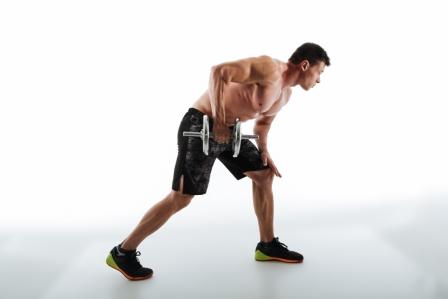
You must always arch your back while doing a dumbbell press. It will limit your range of motion so that you can press the weight upward with full momentum and strength.
Not Keeping the Feet on the Floor
Your feet must be placed on the ground firmly to prevent any minor torso movements. Moreover, it also stabilises the bench press arch. Hence, keeping your feet on the ground will position your upper back and enhance the effectiveness of this exercise.
Heavy Weights
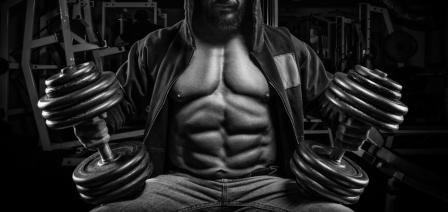
Lifting more weights than your capacity will limit your range of motion. This will lead to an increased risk of injury, especially in the shoulders.
Position of the Dumbbell
While lowering the dumbbell, if it hits too high on the chest, you might get shoulder or chest pain. This might lead to long-term consequences. Hence, do not lift too high.
Bending your Wrists
Bending your wrists while holding a dumbbell can stress your tendons and ligaments. This can lead to wrist pain.
Lifting Head Up
People often lift their head while performing dumbbell press. Even though a slight lift is permissible, but if it is lifted too high, it can cause neck injury.
Other Mistakes
Flaring the elbows, touching the dumbbell to the chest, bouncing the dumbbell off the chest, etc., are some of the other mistakes during the dumbbell press.
Sets, Reps, Programming Recommendations for Dumbbell Press
Generally, you can aim for three sets of twelve reps with ninety seconds rest.
If you are aiming for muscle endurance, you can go for three sets of 20 reps with sixty seconds of rest.
You can have varying sets and programs for different kinds of dumbbell press.
For example,
Flat Bench Press: Three sets of ten reps each
Incline Bench Press: Three sets of five reps each
Decline Bench Press: Three sets of five reps each
Variations of Dumbbell Press
The following are the best variations of dumbbell press that can help you achieve your fitness goals faster:
Dumbbell Floor Chest Press
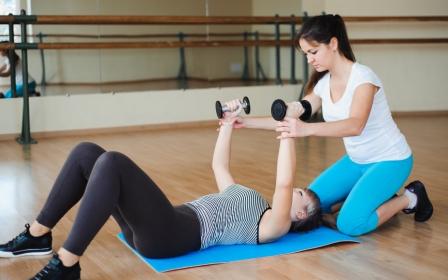
If you wish to focus on your triceps, you can try this variation as it limits the range of motions.
- Start by placing a clean mat on the floor, and choose the dumbbells that will allow you to perform ten reps with comfort.
- Sit down on the mat and hold a dumbbell in each hand while resting it on your thighs.
- Bring the dumbbells to your chest level by leaning back.
- Keep your feet firmly on the ground and push the dumbbells up in a straight motion.
- Lower them till the elbows touch the ground.
- Repeat this for three sets with ten reps.
Dumbbell Wrist Rotation Chest Press
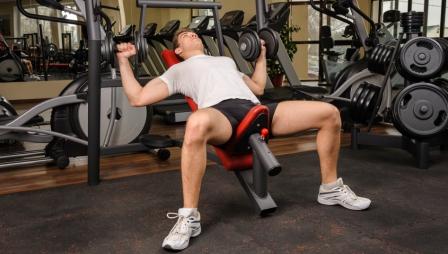
This helps with more muscle activation and stimulates wrist movements.
- Choose the dumbbells that you would be comfortable in for doing ten reps.
- Adjust the bench to 180-degrees and sit on it with a dumbbell in each hand.
- With a neutral grip, bring the dumbbells up to your chest level and lean back.
- Keep your feet flat on the ground and press the dumbbells straight up.
- While doing so, rotate your wrists in such a way that you end up holding the dumbbells with an overhand grip.
- Lower the hand and repeat the motion in reverse. Continue doing so for three sets of ten reps.
Alternating Dumbbell Chest Press
Athletes and players often include this exercise in their daily workout as it helps in building endurance.
- Sit down on a bench that is adjusted to 180-degrees.
- Hold the dumbbells in the same way as mentioned in the above variations.
- Lean back and hold the dumbbells to your chest level.
- Keep your feet flat on the ground and push the dumbbells up in a straight and controlled motion.
- Now keep your right arm extended while lowering your left arm.
- Push the left arm back up while lowering your right arm.
- Repeat this alternatively for three sets of ten reps.
Neutral Grip Dumbbell Chest Press
This helps with muscle recruitment in the triceps.
- Sit on a 180-degree adjusted flat bench.
- Place a dumbbell in each hand and bring the dumbbells to the chest level with a neutral grip.
- Press the dumbbells up in slow motion. Avoid flaring your elbows out.
- Repeat the motion for three sets of ten reps.
Single-arm Dumbbell Chest Press
This helps in engaging the core and stabilises muscles in the chest.
- Adjust the flat bench to 180-degrees and hold the dumbbells in each hand.
- Keep your feet flat on the ground and bring the dumbbells to the chest level.
- Press the dumbbells up in a controlled motion but do not lean to the opposite side.
- Repeat the same process for the other arm.
- Repeat the motion for three sets of ten reps.
Safety & Precautions for Dumbbell Press
Even a minor mistake can lead to severe injuries. The following are some of the tricks and tips that can help you evade any injuries while working out:
- Always warm up and cool down before any workout. It will help you loosen your chest, shoulders, and arms.
- If you feel pain in a flat bench press, try for an incline bench press.
- Do not bring the dumbbells over your shoulders while lowering them.
- Ensure an even grip with all your fingers while holding a dumbbell.
- Even if you are an advanced athlete, always use a spotter.
- Do not overdo the exercise and stick to it three times a week.
- Consult your doctor before starting a new exercise, especially if you have a history.
- Start with small weights and work your way up.
- Press in a straight and controlled motion. Avoid leaning to either side.
- Keep your chest and shoulder blades pulled back while performing dumbbell press.
Alternatives of Dumbbell Press
Are you tired of doing the same workout routine every day? You can bring in some change with the following alternatives:
- Machine chest press
- Dumbbell bench press
- Floor press
- Decline and incline bench press
- Cable press
- Dips
- Push-ups
- Pullover
- Dumbbell fly
- Bench dips

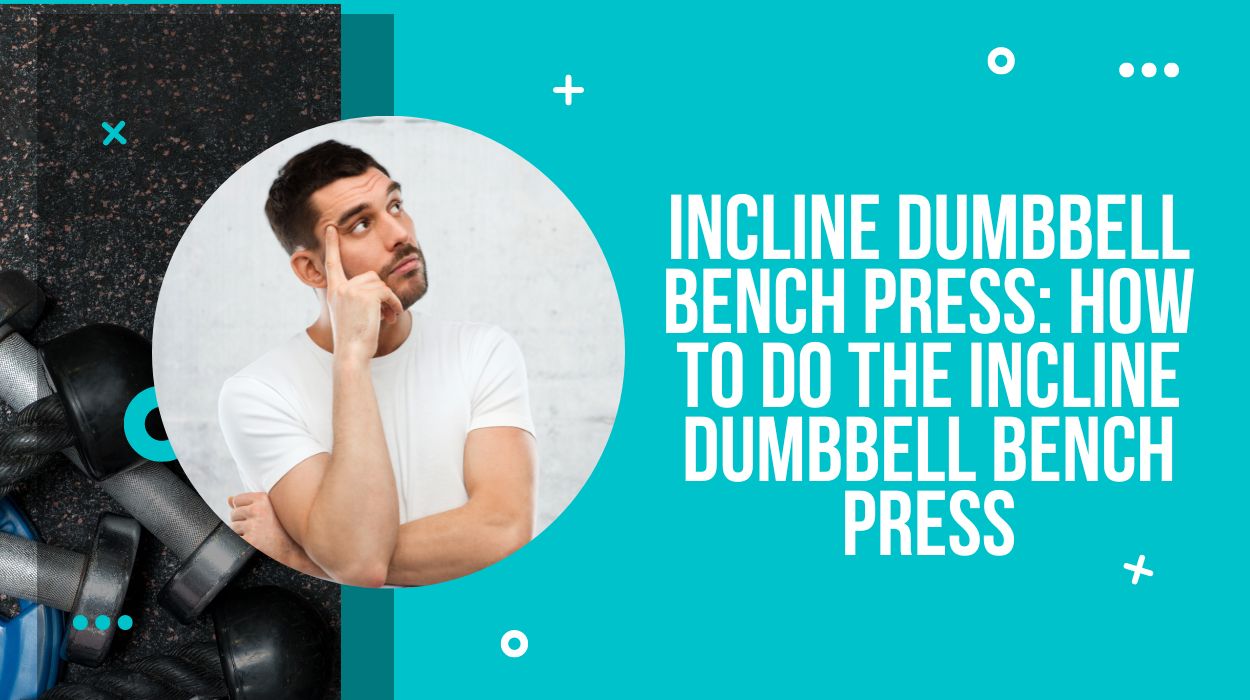

Thanks for the information, you’re help is always spot on.